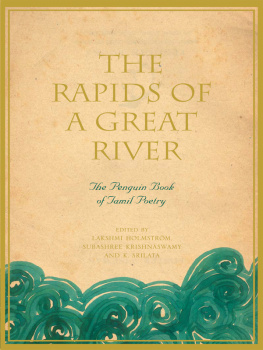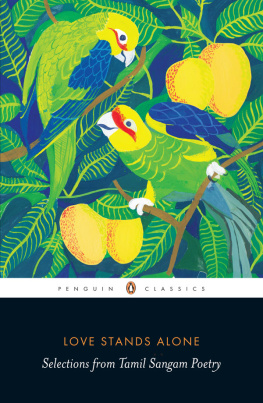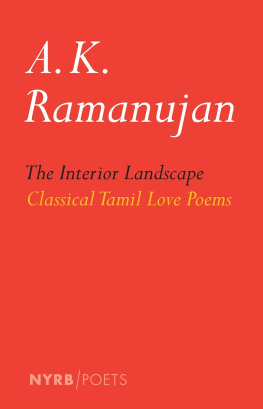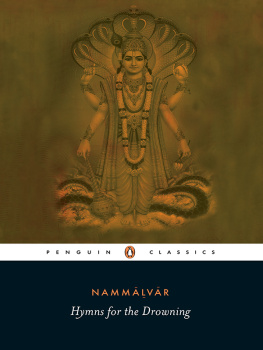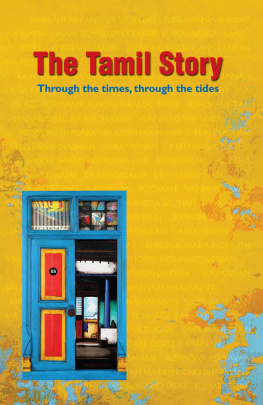In the case of well-known names of poets and texts, we use the established transliteration (Andal, Alvar).
Where names might be unfamiliar to non-Tamil readers, we use an easy and recognizable phonetic transliteration (Sekizhar). We follow the spellings used by modern authors for their own names.
Introduction
Lakshmi Holmstrm, Subashree Krishnaswamy and K. Srilata
1
The well-spring of Tamil poetry, so vibrant and varied, is its long, sophisticated tradition. The earliest Tamil poetry that has come down to us is known as Sangam poetry, named after the assembly or
sangam of poets based in the Pandyan capital, Madurai. According to tradition, there were two earlier such sangams, whose poetry is now lost to us.
Sangam poetry dates from the second century CE , and consists of eight anthologies (Ettuthogai) and ten long poems (Patthupaattu). The poetics on which these are based is codified in the earliest grammar in Tamil, Tolkappiyam, which also dates from this period, and continues to have a profound effect on Tamil poetry. Tolkappiyam classifies all the subject material of poetry under two themes or world views, akam and puram. Akam means that which is inside or the inner world and is, effectively, love poetry. Puram means outside, and consists of public poetry, the praise of kings and celebration of their prowess and generosity, about war and the death of warriors. Characters in akam poetry are never named, but there is a given set of characters who appear in them: the idealized hero and heroine, He and She, Her Mother, Her Friend, and so on, set in idealized landscapes.
Puram poems, on the other hand, are about named historical characters such as Killivalavan, Adiyaman and Pari, chieftains of known places with which they are closely associated. We are very grateful to the writer Dilip Kumar for his valuable insights, meticulous readings and critical comments. The idealized landscapes in which akam poetry, in particular, is based, is central to the design of the poems. There are five such landscapes in akam proper: kurinci or hillside, marutam or cultivated land, mullai or forest, neytal or seashore, and palai or wasteland. Each landscape is named after a flower native to it. Not only is each landscape associated with a season and time of day, but also with specific gods, animals, birds, trees and so on.
Most importantly, each landscape is associated with an aspect of love: kurinci with lovers union, marutam with the lovers unfaithfulness; mullai with patient and hopeful waiting, neytal with anxious, uneasy waiting, and palai with separation and hardship. There are two further aspects of love, perunthinai or mismatched, and kaikilai or unrequited, which are at the edges of the akam frame; no particular landscapes are assigned to them. The Sangam poets never lose sight of the landscape that they know, and their poems are full of concrete and unforgettable details of the fauna and flora of Tamil Nadu for example, the black-legged white heron, the hen-eagle with its parched head and chisel beak, and the long arrangements of flowers upon cassia twigs (all from A.K. Ramanujans translations). At the same time, as A.K. Ramanujan has said, A conventional design thus provides a live vocabulary of symbols: actual objective landscapes of the Tamil country become the interior landscape of Tamil poetry (Ramanujan 1999, 204).
Akam and puram poems complement and contrast with each other. Though puram poems are arranged in landscapes which correspond to akam ones, they are named after different flowers, each standing for a particular stage in siege or battle. Yet the schematization does not work as closely as it does in akam; the symbolism is not as instantly recognized. There is also room for poems which appear to belong to both groups, borrowing from both conventions. Sangam poetry lays the foundation for a Tamil poetic tradition. The notion of the five landscapes with their associated emotions are deeply embedded in its imagery; they inform the early epics such as Silappadikaram, for example, and references to them continue until much later.
Although Sangam poetry is largely secular, the devotional poems of the Saivite and Vaisnavite saints owe much to both akam and puram styles of loving and yearning as well as celebration. And specific poems continue to inspire modern poets, as with the Sri Lankan poet Su. Vilvaratnam who takes the lament of Paris daughter as his starting point to write a political poem of loss and betrayal. Sangam poems continue to speak directly to a modern sensibility because of the universality of many of the situations they portray, the sharpness of their imagery, and the terse style they often employ. Akam poems can be read as dramas in miniature, as Parthasarathy (1993, 281) says in the postscript to his translation of Silappadikaram. They are monologues, or addressed to a particular person or friend or mother.
Puram poems are also fragments of stories in the public world: exploits, celebrations, laments. For full-length narrative poems, however, we must turn to Silappadikaram and Manimekalai. Silappadikaram is attributed to Ilanko Adigal, younger brother of the king of the Cheras, Senguttuvan (2nd5th century CE ?). In its Prologue, it is described as a poem interspersed with prose and song cycles, and it tells the well-known and much loved story of the merchant prince Kovalan and his wife Kannagi. Kovalan leaves Kannagi for the beautiful courtesan and dancer Madhavi with whom he lives for many years, until, convinced suddenly of her falsehood, he returns home. Kovalan and Kannagi set off for Madurai where they hope to begin a new life, but Kovalan, accused of stealing the queens anklet, is killed by the order of the king.

